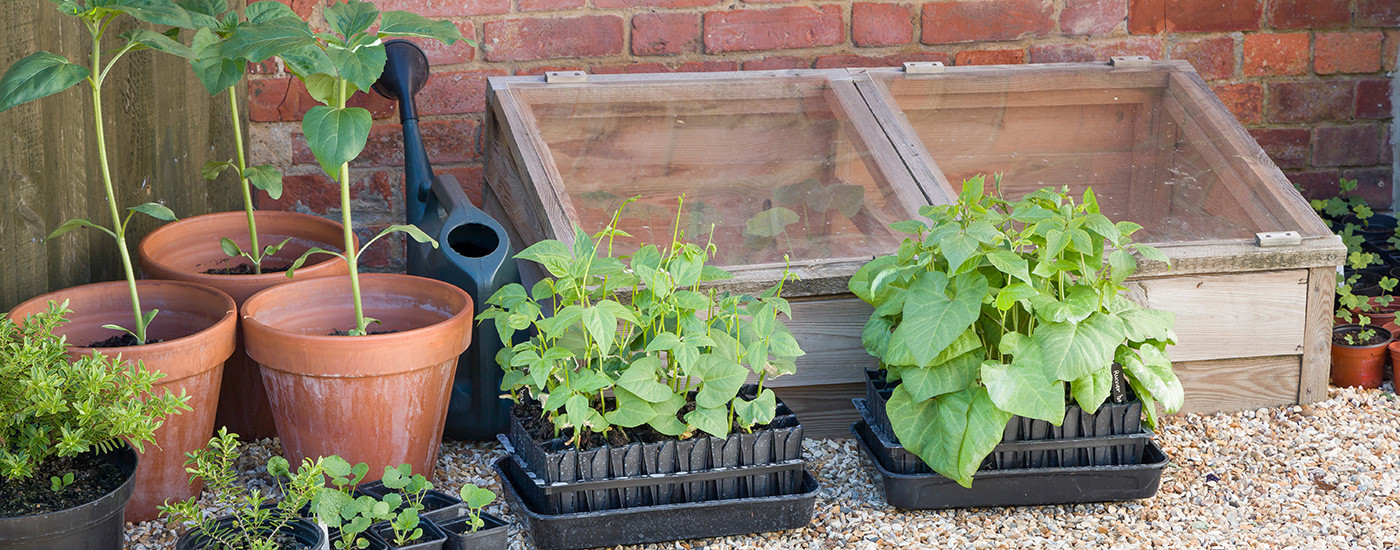What is a coldframe?
At its simplest, a coldframe is a box with a lid that can be lifted. Add in a little science and a coldframe is a transparent structure which uses solar power and insulation to create a microclimate in your garden. The solar energy is trapped inside the coldframe where it warms the plants. Akin to a small, unheated greenhouse, a coldframe offers protection from adverse weather conditions.
What is a coldframe used for?
Coldframe gardening allows plants to be grown in an enclosed environment in order to extend their growing season. A coldframe will protect young or tender plants in autumn against frost and unexpected changes in temperature, and can be used similarly to a raised bed, but with the advantage of a lid to trap heat inside. This makes them the ideal environment for both starting and hardening off seedlings before the growing season normally begins.
What can I grow in a coldframe?
Most plants and crops can be grown in a coldframe but certain produce such as tomatoes, cucumbers and garlic will become too large for a coldframe. Of course, a coldframe can be used to start these crops off but they will have to be transplanted once they outgrow the coldframe. Coldframe gardening is particularly suited to greens (kale, spinach, lettuce), spring onions and leeks, as well as broccoli, cauliflower and delicate herbs.
The coldframe calendar
Spring/early summer – February and March are the months for early sowing lettuce, sweet peas and broad beans. Then from April to June, use the coldframe to harden off (acclimatise) half-hardy annuals and vegetables before they are planted out in the final position. Seedlings that have been on a windowsill can use the coldframe as a halfway house before being planted out too.
Summer – when most coldframes fall empty but the best time to sow biennials for the following spring. Seed trays will be protected from rain and will be safe from animals and birds.
Autumn – once biennials have been planted, the coldframe can house autumn sown hardy annuals, while protecting cuttings and young plants from cooler temperatures, unpredictable changes in the weather as well as mild, first frosts.
Winter – overwinter alpines in a coldframe where they can be protected from the rain and against rotting. Young annuals can also be overwintered.
The benefits of a coldframe
Ideal where there isn’t enough space for a greenhouse and more cost effective than one, a coldframe will give gardeners a head start on the outdoor growing season and also extend the life of your crops beyond the end of the summer. Dormant plants can be protected until the threat of adverse weather passes and, as coldframes are fully portable, you can position them in different areas of the garden to suit the light requirements of different plants or crops e.g. brighter spots for vegetables and shadier areas for cuttings.
Disadvantages of a coldframe
Although accessible via the lift-up lid, you can’t walk into a coldframe like a polytunnel or full-size greenhouse to manage the conditions within. Humidity levels are higher in a coldframe as there is less air inside them and soil can also be much drier so a strict watering schedule must be adopted.
We offer a choice of coldframe – our timber coldframe features a robust, split lid with each half opening independently from the other. Constructed from pressure treated softwood timber, its wooden sides will offer protection against the cold. Our hardwood coldframe features sides with twin-walled polycarbonate glazing for maximum light transmission and improved insulation.
Rather than viewing the coldframe as the greenhouse’s poor relation, think of it as being indispensable in protecting seedlings and young plants and in extending the growing season in your garden. Before long, you’ll wonder how you ever managed without one!

